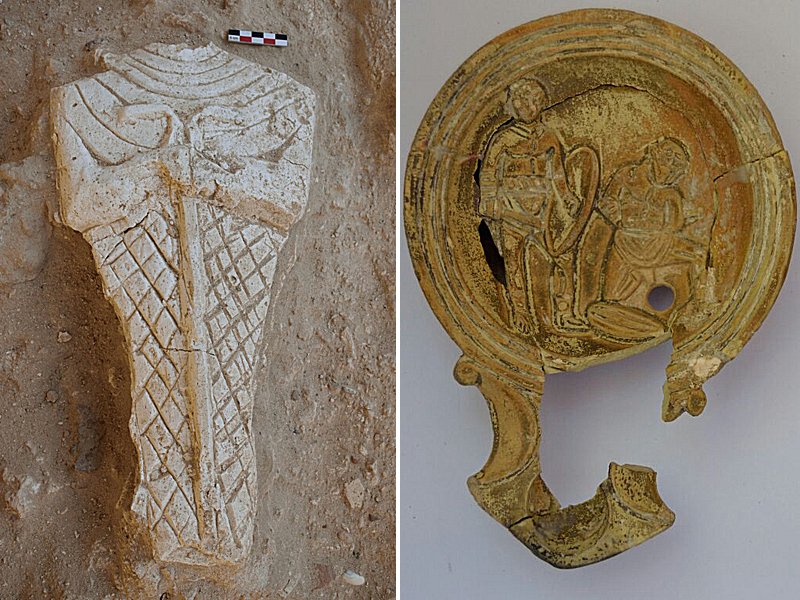AncientPages.com - Several Greco-Roman tombs, including a tombstone, have been uncovered at the Al-Abd archaeological site, in the eastern cemetery of the ancient city of Alexandria, Egypt.
Hellenistic tombs contain a collection of lamps and offerings vessels decorated with scenes of Ancient Egyptian and Greco-Roman deities.
However, the tombstone, which was once used to close one of the cemetery's burial shafts, is the most important part of this discovery, according to Mostafa Waziri Secretary-General of the Supreme Council of Antiquities.
The tombstone is decorated with scenes and inscriptions on a flat background representing the facade of an ancient Egyptian temple, reports Ahram Online.
“The scenes depict a staircase leading to the entrance of the temple and two columns holding up the entrance’s roof. The staircase leads to a set of double doors, one of which is half-open and bears a winged sun-disk decoration
It is believed that the tombstone was installed a false door to mislead thieves, drawing them away from the real door of the tomb. The false-door idea was widespread in Ancient Egypt.
The Al-Abd site contains many ancient burials dating back to the Hellenistic era.
Original story – here.
AncientPages.com
Expand for referencesReferences:







